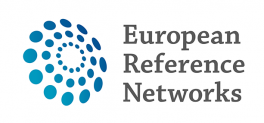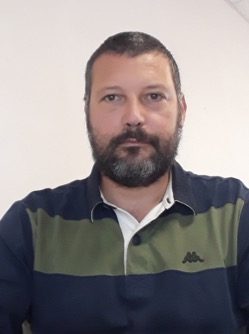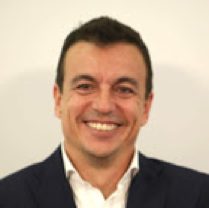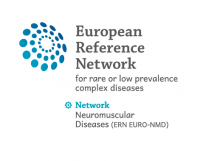|
Newsletter - October 2019 ͏ ͏ ͏ ͏ ͏ ͏ ͏ ͏ ͏ ͏ ͏ ͏ ͏ ͏ ͏ ͏ ͏ ͏ ͏ ͏ ͏ ͏ ͏ ͏ ͏ ͏ ͏ ͏ ͏ ͏ ͏ ͏ ͏ ͏ ͏ ͏ ͏ ͏ ͏ ͏ ͏ ͏ ͏ ͏ ͏ ͏ ͏ ͏ ͏ ͏ ͏ ͏ ͏ ͏ ͏ ͏ ͏ ͏ ͏ ͏ ͏ ͏ ͏ ͏ ͏ ͏ ͏ ͏ ͏ ͏ ͏ ͏ ͏ ͏ ͏ ͏ ͏ ͏ ͏ ͏ ͏ ͏ ͏ ͏ ͏ ͏ ͏ ͏ ͏ ͏ ͏ ͏ ͏ ͏ ͏ ͏ ͏ ͏ ͏ ͏ ͏ ͏ ͏ ͏ ͏ ͏ ͏ ͏ ͏ ͏ ͏ ͏ ͏ ͏ ͏ ͏ ͏ ͏ ͏ ͏ ͏ ͏ ͏ ͏ ͏ ͏ ͏ ͏ ͏ ͏ ͏ ͏ ͏ ͏ ͏ ͏ ͏ ͏ ͏ ͏ ͏ ͏ ͏ ͏ ͏ ͏ ͏ ͏ ͏ ͏ ͏ ͏ ͏ ͏ ͏ ͏ ͏ ͏ ͏ ͏ ͏ ͏ ͏ ͏ ͏ ͏ ͏ ͏ ͏ ͏ ͏ ͏ ͏ ͏ ͏
|
| |
Call for new members to join existing ERNs
| |

|
We are delighted to announce that the European Commission has launched the first call for new members to join the existing 24 ERNs. Briefly outlined, the membership application process involves several steps: - Review the information that is included on the Commission webpage related to the European Reference Networks and the applicable legislation
- Contact national representatives in the ERN Board of MS
- Fill in the application and self-assessment in the online tool
- Include all required documents that are specified in the online tool
Full details of the application process are available on the Commission's Website.
Please note that the closing date for applications is 30th November 2019.
|
|
|
|
|
| |
New nomenclature for LGMD: patient information leaflet
A new nomenclature for LGMD was developed during the 229th ENMC workshop in Naarden, The Netherlands in 2017. This was needed because the definition of LGMD needed an update and the sub-type numbering of the recessive form reached the Z (LGMD 2Z). Consensus was reached on a new classification using the letter D and R for dominant and recessive, a number assigned based on the order of discovery and the affected protein. As a result, for example, LGMD 2B is in the new system LGMD R2 dysferlin-related. The definition of LGMD related to the type of muscle wasting, the age of onset and some clinical characteristics. The results have been published in Neuromuscular Disorders (Straub et al, Volume 28, Issue 8, 2018, Pages 702–710).
For patients, these changes may have considerable consequences. Their disease has now a new name and some types of LGMD no longer are considered to be LGMD, whereas some others that were until recently regarded as different diseases now are considered LGMD-types. It is thus essential for patients to know about these changes and understand their consequences: this new classification will become the standard, and knowing the new name will facilitate contact between newly-diagnosed patients (new classification) and patients who have been diagnosed before (previous classification). It will also allow patients to follow scientific developments. To better explain these changes to a lay audience, Madelon Kroneman, member of the PAB and Marianne de Visser, Chair of the Muscle Group, developed together a patient leaflet. This leaflet has been spread among the members of the Muscle Group, the Patient Advisory Board, and in a LGMD patient group on Facebook. The leaflet is currently available in English. Translations in other languages are encouraged. Please contact the PAB or Marianne de Visser if you can translate it in your own language.
|
|
|
|
| |
Voices of Patients
This month, two more members of the Patient Advisory Board answered our questions about their background, role and expectations of EURO-NMD.
Read below to get to know them!
|
|
|
|
| |

| |
Massimo Marra
CIDP Italia aps a. Tell us a little bit about yourself “I am an IT engineer, I am married with two kids. In my job I deal with databases, big data and digital health. In my free time, I like to go to the seaside since I live close to the coast and I follow my kids in their sports activities. About 10 years ago, after having pneumonia, I was diagnosed with CIDP, the most frequent dysimmune neuropathy. Then I was not longer able to stand and I lost sensitivity in the limbs. After spending 10 months in and out of the hospital and receiving treatments, I was finally able to recover almost completely and I have not had any relapses so far. One year later, I decided to build the Italian website about the pathology and in 2012 I set up the Italian patient organisation for dysimmune neuropathies - CIDP ITALIA - because I thought we needed a legal instrument to communicate incisively with the governmental counterparts. One of the first and main outcome achieved by the association was to obtain the authorisation from the Italian drug regulation agency (AIFA) for IVIg and the transient authorisation for SCIg. Now the number of Italian patients on subcutaneous therapy is likely the highest within the European countries. In the recent years, the average time of diagnosis in Italy has been reduced to a few months and the accessibility to various treatment options allows patients to have a very good quality of life. In the coming years, I would like to continue to combine my job with the engagement for our organisation. In particular, I would like to commit myself to realise self-monitoring systems for peripheral neuropathies.” b. What is your role in EURO-NMD? “I found myself involved in the EURO-NMD almost without realising it but thanks to a series of parallel events. The neuropathies have been included in the reference network for the neuromuscular diseases exactly at the constitution of the EURO-NMD which has a clear prevalence of the muscular component. I acquired information from EURORDIS about the setting-up of the ERNs and I followed the calls for patient representatives. Both my experience and the results achieved by the Italian association seemed to me a useful resource to be shared with others, but above all I was interested in understanding whether elsewhere in Europe there were opportunities for better care and diagnosis that could be brought to Italy. c. What are your expectations of the Network?
“EURO-NMD was created to standardise rare diseases diagnosis, treatments and management in all the EU countries. This means both identifying good practices and collecting data.
We need to work to get epidemiological data on various diseases in different countries of the Union, we need to know the average diagnosis time for the diseases and to better understand whether there are treatments and health services that are still not accessible in some countries. It is also important to understand if a national network for rare diseases exists in each country and how it works, if there is a global management of it and if rare patients have or do not have a preferential path when it comes to care access. For example, we seem to understand that SCIg for CIDP is not accessible in all countries. But uniformity is needed even when we consider the methods for treatments administration. For example, with regard to IVIg, in the same European authorisation, self-administration at home is allowed in some countries, while in others, including Italy, it is available in hospitals only. Finally, in Italy if a person has a diagnostic suspect about a rare neuromuscular disease, there is a network with a dedicated helpline to call in order to enter the diagnostic path. Sometimes we receive requests from patients living in other European countries who are looking for help and we assume that elsewhere this network does not exist or, if it exists, it is not easy accessible for patients. Therefore, the greatest expectation is to create a capillary system in all the EU countries so when a person enters this network for rare neuromuscular diseases he/she can have the same identical opportunities and the same level of attention, regardless where he/she lives.”
|
|
|
|
|
| |
| |

|
Dimitrios Athanasiou
MDA Hellas
a. Tell us a little bit about yourself
“When my son was diagnosed with Duchenne Muscular Dystrophy, a fatal and incurable rare disease, I became a strong international patient advocate in Duchenne and Rare Diseases.
Having a passionate personality and technocratic background, I educated myself with basic rare disease and advocacy knowledge via the EURORDIS Summer School and then with the 14 month Patient Expert Course of the European Patient Academy of Therapeutic Innovation (EUPATI) acquiring basic biotech and regulatory knowledge, where I served as a Member of EUPATI’s Course Committee for the next year, representing the patient voice. Locally in Greece I am the patient representative of MDA HELLAS, a board member of the World Duchenne Organization (WDO) and a board Member of European Patient Forum (EPF). Currently I am serving the rare community EURORDIS EPAC/TAG member, Patient Advisor in TREAT-NMD Advisory Committee for Therapeutics (TACT), DIA’s Program Committee Member and many others. In 2014 I was nominated patient expert by EMA for DMD and have participated in several of EMA's Scientific Advice, SAG, Protocol Assistance and CHMP pilot meetings for Duchenne, providing the essential patient representative perspective when companies request regulatory advice or approval. I am currently serving as PDCO member in EMA representing EURORDIS and Chairing the Patient and Parents Enpr-EMA working group.“ b. What is your role in EURO-NMD?
“My role, as a member of the Patient Advisory Board is to work with the other patient representatives but also with the rest of the stakeholders inside and outside the Network to assure that the patient preferences are taking into account and that the Network is developing in a patient-centered way. My goal is to share the Duchenne Community experience with the rest of the NMD patient advocates learn from them and develop a strong PAB that will influence in positive way the future of EURO NMD”. c. What are your expectations of the Network?
“EURO-NMD is an essential tool to improve care in NMDs and my expectation is that we will all work together to transform this tool to a patient-centered nationality integrated HUB that will bring together research, clinical development, access and patient centricity in the decisions making throughout the EU."
|
|
|
|
|
| |
EJP plans online course on rare diseases
One of the objectives of the European Joint Programme for Rare Diseases (EJP) is to provide an education programme on transversal aspects of rare diseases.
The course which is expected to better inform and train the RD community as well as to increase awareness on RD research and foster top-level research will start to become available in late 2020.
To ensure the upcoming course truly meets the needs of the rare disease community the EJP has just finished conducting an assessment. The results of this assessment along with further information about the online course itself can now be found on the EJP website.
As we become aware of further information about the modules and anticipated rollout dates we include this in future newsletters.
|
|
|
|
| |
Group aims to offer advice on ERN registry interoperability
The EJP RD - Pillar 2 group provided an elaborated guidance document describing interoperability considerations on the development and operation of ERN registries.
The aim is to offer organizational advice on how to make a registry more interoperable in collaboration with the EJP RD. The suggestions provided are equally relevant to groups setting up new registries or improving existing registries, and relate to all types of registries (primary resources, aggregation focused, clinical objectives, research objectives, etc.).
|
|
|
|
| |
Workshop and Hackathon: Molecular pathways for rare disease (FAIR) data analysis
Registration deadline 10 November 2019
Workshop date - 26-29 November 2019
The focus of this workshop is:
1. Pathway creation and curation – especially rare disease and adverse outcome pathways inspired by needs of ERNs and tox community (day 1-2)
2. FAIR data preparation (prep for pathway and network analysis) – define needs of data analysis and do first steps towards solving (day 2-3).
The workshop takes place day 1-3, after this there will be a hackathon in which we will start together solving the identified problems and test different approaches.
|
|
|
|
|
| |
Share4Rare Pilot for Rare Neuromuscular Diseases
The Share4Rare platform is growing in strength, with over 900 users validated since April 2019. This growing community of rare disease patients and families is providing a secure environment for people to connect, share information and learn more about their disease.
We are pleased to announce that we will soon be ready to start the neuromuscular pilot for the research pillar of the S4R platform. Registered users who fit the eligibility criteria will be asked to complete surveys about quality of life/burden of illness and the impact of the disease on education and employment opportunities.
More information about the upcoming neuromuscular pilot is available here.
In addition to recruiting for the neuromuscular pilot, S4R also has an open call for Ambassadors. Information about applying to be an Ambassador is available here.
The call is open until 13th November.
The S4R Myotonic Dystrophy chapter, written in collaboration with patients and carers, is also now available here.
|
|
|
|
| |
Publication: Strategies to Improve the Quality of Reference Networks for Rare Diseases
Background: In 2017, 24 European Reference Networks (ERNs) have been recognized in order to improve rare diseases’ management. However, a lack of practical information persists regarding the most adequate ways to fulfil ERNs’ quality criteria. Objective: Identify the most efficient strategies to improve ERNs’ quality. Methods: 67 strategies, related to 8 activity domains (Quality Management System, healthcare coordination, clinicians’ training, inter-ERNs’ members collaborations, clinical data management, ERNs’ external collaborations/supports, information provided to patients, and ERNs’ financing) were selected from peer-reviewed scientific publications. Their usefulness, feasibility and adequacy was evaluated by 17 ERNs-related clinicians and 10 Belgian health policy makers. Results: Results showed that the most efficient strategies are the participation to quality controls, satisfaction surveys among patients and external physicians, diffusion of information about the hospitals’ research activities, specific trainings addressed to clinicians, exchange of medical samples between hospitals, and development of adequate clinical databases. The poor practical feasibility of 7 highly-useful strategies was also highlighted, such as big clinicians’ concerns regarding legal/ethical frameworks for the reimbursement of cross-country care and exchange of patients’ data. Conclusions: This study enabled to identify efficient strategies to improve and valorize ERNs’ quality, expertise and functioning, as well as weaknesses that should be addressed.
|
|
|
|
| |
RE(ACT) Congress 2020 and IRDiRC Conference
| |

|
Early-bird reigstration closes 30th November! The BLACKSWAN Foundation and IRDiRC, the International Rare Diseases Research Consortium, are glad to announce the RE(ACT) Congress 2020 and IRDiRC Conference, Berlin, Germany, 11th-14th March 2020. This joint event will continue the RE(ACT) Congress series (6th edition) and IRDiRC Conference series (4th edition). It aims to bring together scientific leaders and experts and young scientists from a variety of breakthrough scientific fields to present cutting-edge research, exchange ideas and discuss policies related to rare diseases research. Patients and patient organizations, who are committed to research, will also be in attendance to share their experiences and perspectives.
|
|
|
|
|
| |
Diplôme Inter-Universitaire de Myologie 2019-2020
| |

|
The rapid progress of research, the renewal of concepts, the evolution of the care of patients now make myology a well-differentiated field of medicine. The objective of this teaching course is to provide students with a coherent, structured and modern vision of this discipline in its anatomo-physiological bases.
Please note: this course and all related information is in French.
|
|
|
|
|







